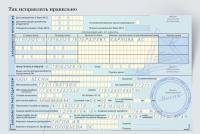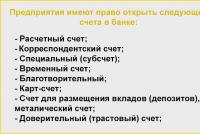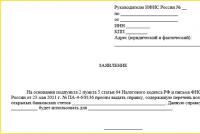Application for refund of overpaid tax
After the new year, the documents that legal entities and individuals used to set off and refund tax overpayments have changed. The Federal Tax Service has supplemented the previously existing forms with sections that will be needed to apply for a credit / refund of insurance premiums. Consider what exactly has changed, and how the application form for offsetting tax overpayments looks now.
On March 31, 2017, the “On approval of the forms of documents used by tax authorities and taxpayers in the process of offsetting and refunding amounts of overpaid (collected) taxes, fees, insurance premiums, penalties, fines” came into force. The document replaced the previous one, which contained forms of similar information messages.
When new forms are needed
According to, taxpayers who have overpaid can dispose of the overpaid amounts in different ways:
- offset them as future payments;
- pay off the arrears on other obligatory payments;
- reduce or completely close the debt on penalties and fines for offenses;
- request a refund.
These rules apply to all fees and taxes introduced in the Russian Federation, including state duty (with some features listed in), VAT, advance payments. However, it must be understood that the tax service will not return or offset the overpaid amount against future payments until the debts are repaid.
Sample application letter for overpaid tax
If the taxpayer decides to redistribute his money, he needs to write an application for a tax offset. The form of this document is presented in the Order of the Federal Tax Service - Appendix No. 9. You can download it at the bottom of the page.
How to fill out such a document?
Suppose Kolosok LLC filed a transport tax return for 2016, but made a mistake when paying it, paying 3,112 rubles more. The organization applies to the Interdistrict IFTS, asks for a credit for overpayment of taxes. The application writes that the overpaid amount should be credited to her on account of the upcoming payments on property tax of organizations. Consider step by step filling out such a document.
Step 1. Traditionally, at the very top, you should indicate the TIN and KPP. The IP identification number consists of 12 digits, so there should not be any free cells left. Organizations enter only 10 digits in the corresponding fields, dashes are placed in the remaining two. When filling out the line intended for the checkpoint, applicants must act in the same way: if there are numbers - enter them, if not - put dashes.
Step 2. We prescribe the number of the appeal. Here they put down the number of times in the current year they applied for offset. Do not forget about the dashes, if the number of numbers we enter is less than the number of cells.

Step 3. Enter the code of the tax authority where the appeal will be sent. This should be an inspection of the Federal Tax Service at the place of registration of an individual entrepreneur or organization. In a consolidated group of taxpayers, the responsible member of this group must apply for the offset of the overpayment of income tax.

Step 4. We prescribe the full name of the applicant organization, for example, Kolosok Limited Liability Company. The remaining cells are filled with dashes. None of them should be empty. When filling out this field by an individual entrepreneur, he must indicate the last name, first name and patronymic, if any.
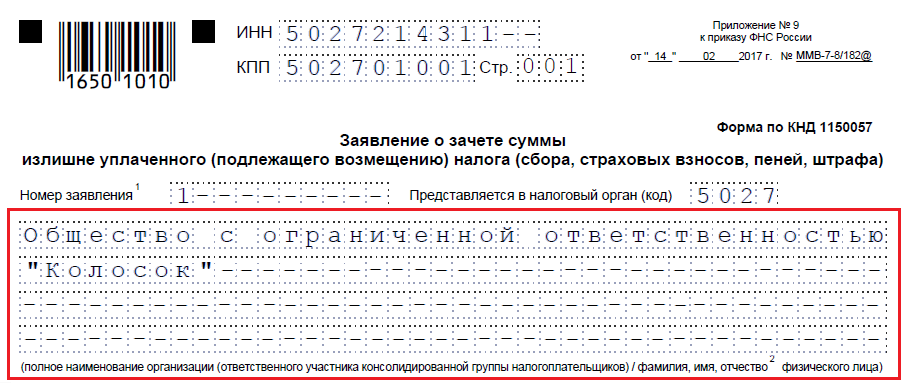
Step 5. We indicate the article of the Tax Code of the Russian Federation, on the basis of which offset can be made. It will depend on which payment was overpaid. The Federal Tax Service left 5 cells to indicate a specific article. If some of them are not needed, it is necessary to put dashes. Here are the options for filling out this field:
- - to set off or return overpaid fees, insurance premiums, penalties, fines;
- - to return overcharged amounts;
- - for VAT refund;
- - to return the overpayment of excise duty;
- - for the return or offset of the state fee.

Step 6. We write down the specific amount that the applicant wants to set off. It is indicated in numbers, without text decoding.

Step 7. The applicant specifies for what period the overpayment was formed. The developers provided 10 familiarity to indicate the code, of which there are two dots. The first two of them can be filled in with one of the following options:
- MS - monthly;
- KV - quarterly;
- PL - semi-annual;
- GD - annual.
Specific values will depend on the reporting period provided for by law for the payment for which the offset is planned.
In the 4th and 5th familiarity, the reporting period is specified:
- if a monthly billing period is approved for the payment, then in the provided columns enter the numerical value of the month (from 01 to 12);
- if quarterly - indicate the value of the quarter (from 01 to 04);
- for payments with a semi-annual reporting period, values 01 or 02 are entered - depending on the semi-annual;
- for the annual fee, zero values \u200b\u200bare provided, that is, “0” must be put down in both cells.
The last four characters are for a specific year, such as 2016.
Instead of alphanumeric combinations, a specific date can also be written, for example, 01/25/2016. Such an entry is allowed if the legislation provides for a specific date for the payment of a fee or for the submission of a declaration.
Examples of filling in the billing period: "MS.02.2016"; "Q.03.2016"; "PL.01.2016"; "GD.00.2016"; "04.05.2016".

Step 8. Enter the OKTMO code. If you do not know it or have forgotten it, you can call the Federal Tax Service at the place of registration or on the nalog.ru website to find out the required code by the name of the municipality.

Step 9. Accurately enter the BCC for the payment of the corresponding payment, using the Order of the Ministry of Finance of Russia dated 07/01/2013 N 65n. You can also find out the code using the website of the Federal Tax Service or look at it on a previously completed payment order.

Step 10. We specify to which IFTS the excess funds were transferred.

Step 11. We indicate what needs to be done with the overpayment - pay off the debt or leave funds on account of upcoming payments.

Step 12. Fill in the period for the payment for which it is planned to offset. In our case, the corporate property tax is quarterly, so we enter the quarter in which the overpayment should go.

Step 13. We write down the OKTMO code again. As a rule, it is duplicated.

Step 14. We specify the CCC for the transfer of funds, to which the excess amount will go. In our country, it differs from the previous KBK, since taxes are different. If the overpayment goes towards future payments for the same fee, then the BCCs are the same. An exception in the event that the codes were previously changed by decision of the Ministry of Finance. We also recall that the offset can be carried out according to certain rules: they must belong to the same type - federal, regional or local. It is impossible, for example, to set off the federal part of income tax against future sales tax payments.

Step 15. The IFTS code, in which the arrears are listed, is not filled in in our example. But if the overpayment is directed to repay the debt, then this field must be filled in.

Step 16. The last line of the first part of the application concerns the number of pages and applications. In the fields provided, applicants indicate the relevant data.

Step 17. The second half of the document should not cause problems when filling out. Here it is necessary to clarify who and when submits the appeal, as well as indicate the contact phone number. The left part remains blank: it is intended for the marks of the inspectors of the Federal Tax Service.
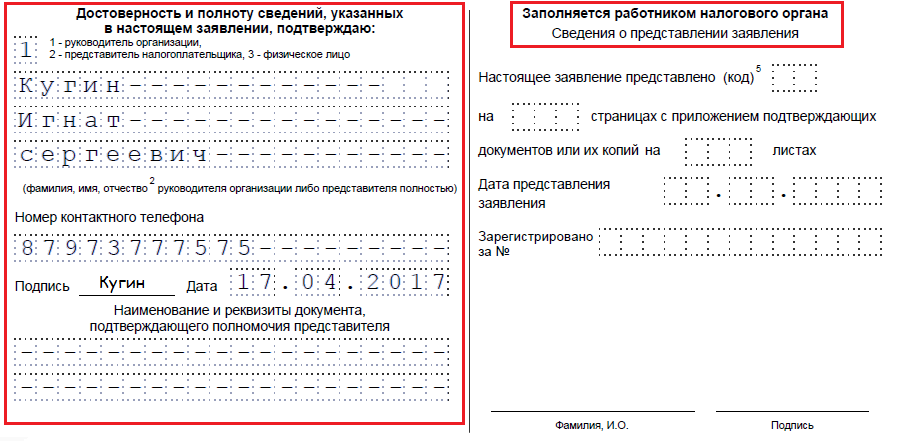
How to return money
If the entrepreneur decides to return the overpayment amount, he needs to use another form from the order of the Federal Tax Service dated February 14, 2017 No. ММВ-7-8 /, proposed in Appendix No. 8. It contains a form for returning the excess amount.
The rules for filling out this document are about the same. Therefore, we will not consider them in detail, but we will give an example of a completed document. In our case, Kolosok LLC overpaid VAT for the first quarter of 2017 in the amount of 15 thousand 732 rubles and now wants to return it. This is what the appeal of the head of the LLC will look like.
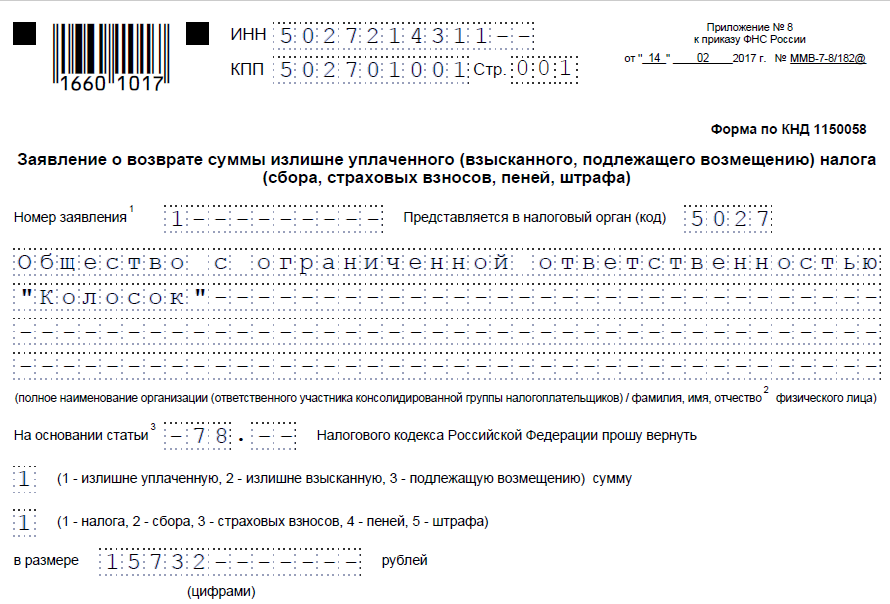
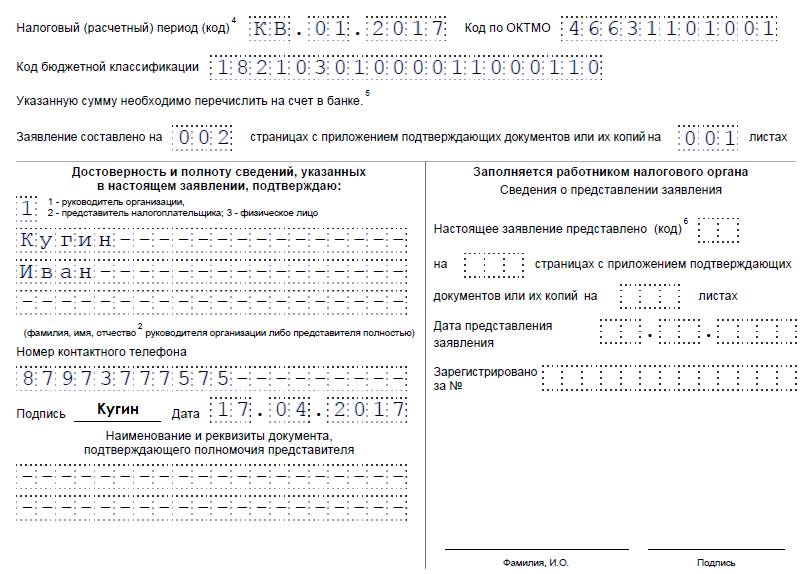
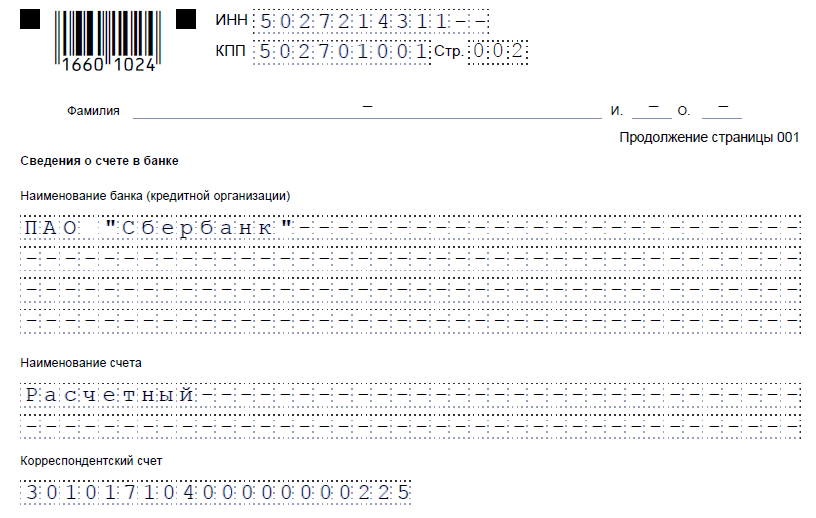
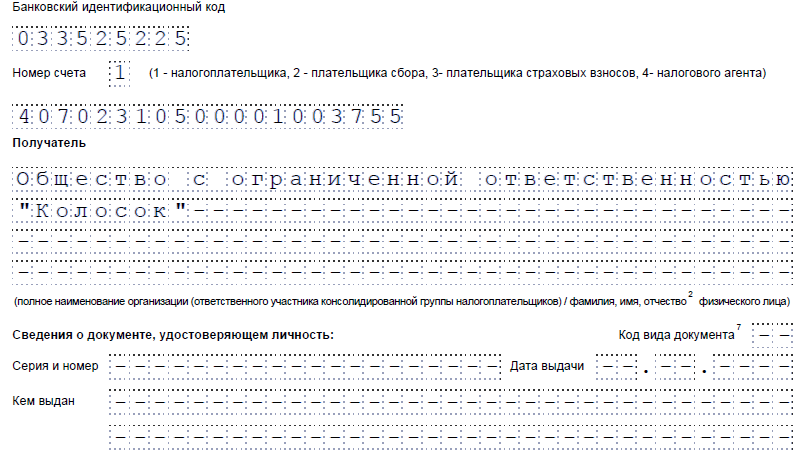
When and how to apply
According to, you can apply for a set-off and a refund within 3 years from the date the fee was paid. Documents can be delivered in three ways:
- personally;
- by mail, - a valuable letter with an inventory;
- in electronic form via telecommunication channels or through a personal account.
Having received such an application, the tax authority decides whether to satisfy it or not. The service notifies the entrepreneur of its decision within 10 days from the date of receipt of the application. As a rule, if the initiative comes from an organization or individual entrepreneur, the FTS makes a reconciliation of calculations. If the overpayment is discovered by the inspector himself, then the reconciliation may be refused. The entrepreneur is not released from the obligation to submit an application.

